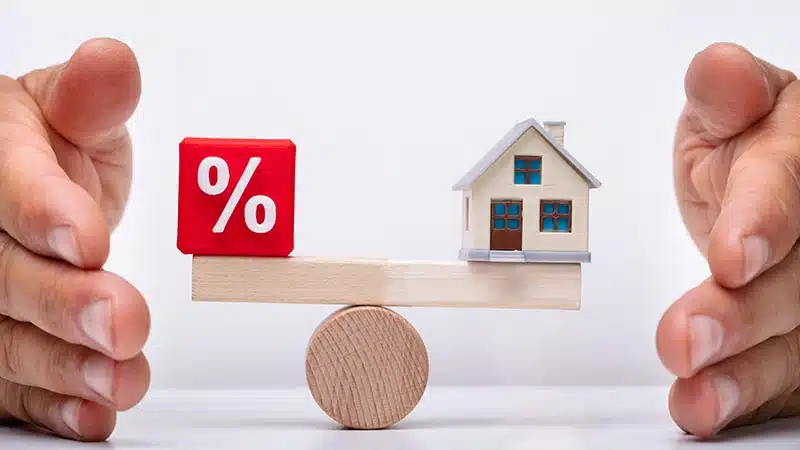The Relationship Between Mortgage Rates and Property Prices in Australia
Australia’s housing market has long been a topic of discussion among economists, policymakers, and homebuyers alike. Over the past few decades, the country has experienced significant fluctuations in property prices, driven by various factors, including economic growth, demographic changes, and shifts in consumer sentiment. Homeownership remains a cornerstone of Australian culture, with many families aspiring to own their own home. As such, understanding the dynamics of the housing market is crucial for both potential buyers and investors.
In recent years, the Australian property market has shown resilience, even in the face of economic challenges such as the COVID-19 pandemic. However, this resilience has not been without its complexities. One of the key factors influencing property prices is the level of mortgage rates, which directly affects buyers’ purchasing power and their ability to enter the market. As mortgage rates fluctuate, so too do property prices, creating a delicate balance that can have profound implications for the overall economy.

The Basics of Mortgage Rates and Property Prices
Mortgage rates, the interest charged on loans taken out to purchase property, play a pivotal role in the housing market. When mortgage rates are low, borrowing becomes cheaper, leading to increased demand for homes as more buyers can afford larger loans. This heightened demand can drive property prices up, as sellers capitalize on the favorable conditions. Conversely, when mortgage rates rise, borrowing becomes more expensive, which can dampen demand as potential buyers are priced out of the market. As a result, property prices may stagnate or decline in response to rising interest rates.
The relationship between mortgage rates and property prices is often viewed through the lens of supply and demand. In a low-interest-rate environment, buyers are more likely to enter the market, increasing demand for available properties. This influx of buyers can lead to bidding wars, where multiple buyers compete for the same property, driving prices higher. In contrast, when interest rates rise, the purchasing power of buyers decreases, leading to reduced demand. Sellers may find it more challenging to attract buyers, resulting in a slowdown in property price growth or even a decrease in prices.
The Impact of Monetary Policy
The Reserve Bank of Australia (RBA) plays a crucial role in influencing mortgage rates through its monetary policy decisions. When the RBA adjusts the cash rate, it affects the cost of borrowing for banks, which in turn influences the interest rates that consumers pay on their mortgages. In recent years, the RBA has implemented a series of interest rate cuts to stimulate the economy, particularly in response to the economic impact of the pandemic. These cuts have contributed to historically low mortgage rates, encouraging homebuyers to enter the market.
However, the relationship between mortgage rates and property prices is not always straightforward. Other factors, such as consumer confidence, employment rates, and overall economic conditions, also play significant roles in determining property prices. For instance, even in a low-interest-rate environment, if consumer confidence is low, potential buyers may hesitate to make a purchase, leading to subdued demand and stagnant prices.
The Role of Investor Activity
Investor activity is another crucial element that influences the relationship between mortgage rates and property prices in Australia. When interest rates are low, property investment becomes more attractive, as investors seek to capitalize on lower borrowing costs. Increased investor activity can lead to significant price growth in certain segments of the market, particularly in metropolitan areas where demand for rental properties is high. However, if mortgage rates rise, investors may reassess their strategies, potentially leading to a decrease in demand and a subsequent slowdown in price growth.
 Additionally, government policies aimed at curbing speculative investment, such as changes to taxation laws or restrictions on foreign buyers, can also impact property prices. These measures can alter the dynamics of the housing market, affecting both owner-occupiers and investors. For instance, if the government implements policies to discourage speculative buying, this could lead to a decrease in demand, particularly in investor-driven markets, which may subsequently affect property prices.
Additionally, government policies aimed at curbing speculative investment, such as changes to taxation laws or restrictions on foreign buyers, can also impact property prices. These measures can alter the dynamics of the housing market, affecting both owner-occupiers and investors. For instance, if the government implements policies to discourage speculative buying, this could lead to a decrease in demand, particularly in investor-driven markets, which may subsequently affect property prices.
The relationship between mortgage rates and property prices in Australia is complex and multifaceted. While lower mortgage rates typically lead to increased demand and higher property prices, various external factors, including economic conditions, investor activity, and government policies, also play a significant role. As the Australian economy continues to evolve, understanding these dynamics will be crucial for homebuyers, investors, and policymakers alike, as they navigate the challenges and opportunities within the housing market. Keeping a close eye on mortgage rate trends and their potential impact on property prices will remain essential for anyone looking to make informed decisions in this ever-changing landscape.